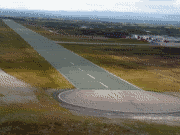Edge540
Well-known member
- Joined
- Dec 20, 2006
- Posts
- 149
How about this one. You take off in a tail wind, as you increase forward speed the tail wind also increases to match your forward speed, Aircraft 10 KIAS, Tail wind 10 Knots, seconds later aircraft 20 KIAS, Tail wind 20 Knots, several more seconds later Aircraft 100 knots, Tail wind 100 knots. Would the aircraft take off?
I think you might have written the question wrong. KIAS is indicated airspeed, and if you have indicated airspeed you have relative wind flowing into the pitot tube and therefore across the wings. With indicated airspeed you generate lift, with enough of that stuff you will fly.






